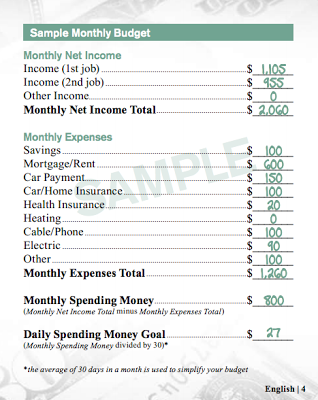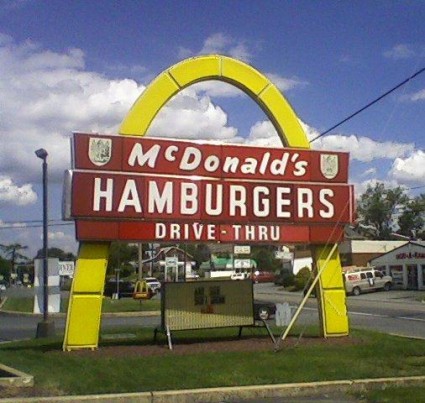 According to stunning new numbers just released by the federal government, nine of the top ten most commonly held jobs in the United States pay an average wage of less than $35,000 a year. When you break that down, that means that most of these workers are making less than $3,000 a month before taxes. And once you consider how we are being taxed into oblivion, things become even more frightening. Can you pay a mortgage and support a family on just a couple grand a month? Of course not. In the old days, a single income would enable a family to live a very comfortable middle class lifestyle in most cases. But now those days are long gone. In 2014, both parents are expected to work, and in many cases both of them have to get multiple jobs just in order to break even at the end of the month. The decline in the quality of our jobs is a huge reason for the implosion of the middle class in this country. You can’t have a middle class without middle class jobs, and we have witnessed a multi-decade decline in middle class jobs in the United States. As long as this trend continues, the middle class is going to continue to shrink.
According to stunning new numbers just released by the federal government, nine of the top ten most commonly held jobs in the United States pay an average wage of less than $35,000 a year. When you break that down, that means that most of these workers are making less than $3,000 a month before taxes. And once you consider how we are being taxed into oblivion, things become even more frightening. Can you pay a mortgage and support a family on just a couple grand a month? Of course not. In the old days, a single income would enable a family to live a very comfortable middle class lifestyle in most cases. But now those days are long gone. In 2014, both parents are expected to work, and in many cases both of them have to get multiple jobs just in order to break even at the end of the month. The decline in the quality of our jobs is a huge reason for the implosion of the middle class in this country. You can’t have a middle class without middle class jobs, and we have witnessed a multi-decade decline in middle class jobs in the United States. As long as this trend continues, the middle class is going to continue to shrink.
The following is a list of the most commonly held jobs in America according to the federal government. As you can see, 9 of the top 10 most commonly held occupations pay an average wage of less than $35,000 a year…
- Retail salespersons, 4.48 million workers earning $25,370
- Cashiers 3.34 million workers earning $20,420
- Food prep and serving staff, 3.02 million workers earning $18,880
- General office clerk, 2.83 million working earning $29,990
- Registered nurses, 2.66 million workers earning $68,910
- Waiters and waitresses, 2.40 million workers earning $20,880
- Customer service representatives, 2.39 million workers earning $33,370
- Laborers, and freight and material movers, 2.28 million workers earning $26,690
- Secretaries and admins (not legal or medical), 2.16 million workers earning $34,000
- Janitors and cleaners (not maids), 2.10 million workers earning, $25,140
Overall, an astounding 59 percent of all American workers bring home less than $35,000 a year in wages.
So if you are going to make more than $35,000 this year, you are solidly in the upper half.
But that doesn’t mean that you will always be there.
More Americans are falling out of the middle class with each passing day.
Just consider the case of a 47-year-old woman named Kristina Feldotte. Together with her husband, they used to make about $80,000 a year. But since she lost her job three years ago, their combined income has fallen to about $36,000 a year…
Three years ago, Kristina Feldotte, 47, and her husband earned a combined $80,000. She considered herself solidly middle class. The couple and their four children regularly vacationed at a lake near their home in Saginaw, Michigan.
But in August 2012, Feldotte was laid off from her job as a special education teacher. She’s since managed to find only part-time teaching work. Though her husband still works as a truck salesman, their income has sunk by more than half to $36,000.
“Now we’re on the upper end of lower class,” Feldotte said.
There is a common assumption out there that if you “have a job” that you must be doing “okay”.
But that is not even close to the truth.
The reality of the matter is that you can even have two or three jobs and still be living in poverty. In fact, you can even be working for the government or the military and still need food stamps…
Since the start of the Recession, the dollar amount of food stamps used at military commissaries, special stores that can be used by active-duty, retired, and some veterans of the armed forces has quadrupled, hitting $103 million last year. Food banks around the country have also reported a rise in the number of military families they serve, numbers that swelled during the Recession and haven’t, or have barely, abated.
There are so many people that are really hurting out there.
Today, someone wrote to me about one of my recent articles about food price increases and told me about how produce prices were going through the roof in that particular area. This individual wondered how ordinary families were going to be able to survive in this environment.
That is a very good question.
I don’t know how they are going to survive.
In some cases, the suffering that is going on behind closed doors is far greater than any of us would ever imagine.
And often, it is children that suffer the most…
A Texas couple kept their bruised, malnourished 5-year-old son in a diaper and locked in a closet of their Spring home, police said in a horrifying case of abuse.
The tiny, blond-haired boy was severely underweight, his shoulder blades, ribs and vertebrae showing through his skin, when officers found him late last week.
You can see some photos of that poor little boy right here.
I hope that those abusive parents are put away for a very long time.
Sadly, there are lots of kids that are really suffering right now. There are more than a million homeless schoolchildren in America, and there are countless numbers that will go to bed hungry tonight.
But if you live in wealthy enclaves on the east or west coasts, all of this may sound truly bizarre to you. Where you live, you may look around and not see any poverty at all. That is because America has become increasingly segregated by wealth. Some are even calling this the “skyboxification of America”…
The richest Americans—the much-talked about 1 percent—are a cloistered class. As the Nobel Prize-winning economist Joseph Stiglitz scathingly put it, they “have the best houses, the best educations, the best doctors, and the best lifestyles, but there is one thing that money doesn’t seem to have bought: an understanding that their fate is bound up with how the other 99 percent live.” The Harvard political philosopher Michael Sandel has similarly lamented the “skyboxification” of American life, in which “people of affluence and people of modest means lead increasingly separate lives.”
The substantial and growing gap between the rich and everyone else is increasingly inscribed on our geography. There have always been affluent neighborhoods, gated enclaves, and fabled bastions of wealth like Greenwich, Connecticut; Grosse Pointe, Michigan; Potomac, Maryland; and Beverly Hills, California. But America’s bankers, lawyers, and doctors didn’t always live so far apart from teachers, accountants, and small business owners, who themselves weren’t always so segregated from the poorest, most struggling Americans.
Nobody should talk about an “economic recovery” until the middle class starts growing again.
Even as the stock market has soared to unprecedented heights over the past year, the decline of middle class America has continued unabated.
And most Americans know deep inside that something is deeply broken. For example, a recent CNBC All-America Economic Survey found that over 80 percent of all Americans consider the economy to be “fair” or “poor”.
Yes, for the moment things are going quite well for the top 10 percent of the nation, but that won’t last long either. None of the problems that caused the last great financial crisis have been fixed. In fact, they have gotten even worse. We are steamrolling toward another great financial crisis and our leaders are absolutely clueless.
When the next crisis strikes, the economic suffering in this nation is going to get even worse.
As bad as things are now, they are not even worth comparing to what is coming.
So I hope that you are getting prepared. Time is running out.


